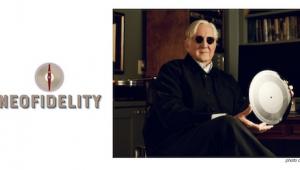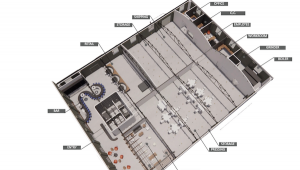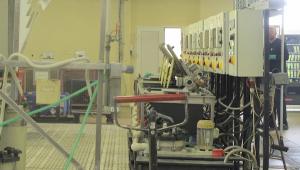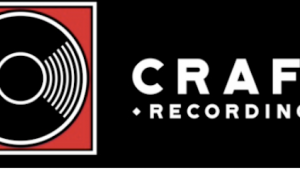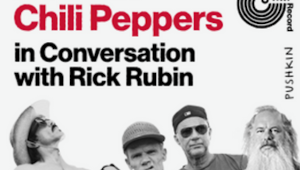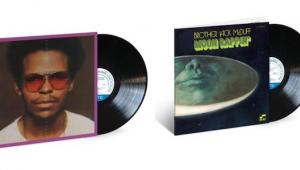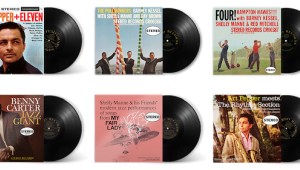Too bad they didn't use the Plangent system for the digital transfers. Does Tom Fine have much experience doing the 3-2 mix downs? Wasn't that always handled by Wilma Cozart Fine in the past?
Half Speed Mastered Mercury Living Presence Series Debuts With Five Classics

Tape playback was via a special Ampex ATR-100 machine. The 3:2 transfers done in the digital domain was by Tom Fine, son of the legendary team of recording engineer Robert Fine and producer Wilma Cozart Fine, who then produced the final masters Showell used for cutting lacquers. Fine says he used "modern technology" to fix "very audible problems with the old tape splices or edit points." Fine promises for the series "greater micro-detail and precision stereo imagery than was possible back in the older days of vinyl mastering. The benefit for the listener is the ability to hear deeper into the music and performance, to be in the Living Presence of these classic recordings." The series promises "lower noise and increased dynamics compared to the original LPs", which as all Mercury Records aficionados know, were unfortunately often miserably pressed. The records will be pressed on 180g vinyl at Optimal in Germany and housed in jackets featuring the original artwork and liner notes.
While the press release identified the playback deck, it did not specify the analog to digital converter, or the digital to analog converter used in conjunction with Showell's specially adapted 1/2 speed Neumann VMS-80 lathe, which can have a profound and "global" sonic effect on the final results.
The sound of the original mono title, Mussorgsky's "Pictures at an Exhibition" (orchestrated by Ravel) with Rafael Kubelik conducting the CSO, recorded in April of 1951 and released that fall moved The New York Times critic Howard Taubman to write "...unless this recording has flattered the (then held in lower regard) ensemble's competence out of all recognition, one must welcome the Chicagoans back to the top ranks of American orchestras". Taubman then went on to heap praise on the recording quality (something New York Times music critics sadly no longer do) adding "....the orchestra's tone is so life-like that one feels one is listening to the living presence."
The first series drop date is November 26th at all major retailers and on the Decca Classics online store. It will be interesting to hear how these digitized classical titles sound and how the vinyl enthusiast community welcomes them.
- Log in or register to post comments


Agree with your comment on the Plangent system though I am only aware of it being used on the Marcel Dupre re-masterings.
If you want to hear a first hand account of the mastering of these forthcoming Mercury Living Presence LPs ( and other titles) it is worthwhile listening to the dCS sponsored " Trust Your Ears" podcast Episode 3 where Tom Fine and Abbey Road's Jared Hawkes reflect on their work at the Abbey Road archive facility in Thamesmead ( South London). In fact if you are interested in the label get to hear all 3 episodes and see the video on You Tube.
Yes Wilma Cozart Fine did indeed do the original 3:2 downmixes (effectively in real time) right up to the SACD release series. Unfortunately due to circumstances beyond her control she was unable to attend the recent sessions at Thamesmead ;-).
https://dcsaudio.com/edit/listen-to-episode-3-of-trust-your-ears-the-mer...

Analog-sourced digitally remastered vinyl pressings. That's encouraging the mistake IMO. Speakers Corners made all-analog reissues of Mercury titles a few years ago, why not do it the right way Decca?
Also, those titles aren't very good. One thing audiophiles never understood about classical is that the interpretation is paramount - the Living Presence series had some very good interpretations, just not these five.
Wow, I haven't posted something so negative in a while.

that I do not have to buy digital vinyl. Saves money.

they probably would have been better served using the Plangent system for the digital transfer.With that said there is nothing wrong with doing hi res digital transfers.They are transparent tothe source signal. as for interpretations that is very much a matter of preference. I'd be curious as to who you feel did a better job than Howard Hanson on those pieces. I actually like all five and consider the Stravinksy Firebird to be both one of the best interpretations of that piece and one of the best sounding orchestral recordings of all time. I don't see how that is considered a stinker by any measure. But it is a matter of taste.

If you ever want to put it to a test at one of these audio shows let's set something up. Let's have some fun and put it to a public test. And by put it to the test I am talking about a well designed DBT that is designed to give us a statistically significant confidence rating that is up to scientific standards. We certainly can do some sighted tests first to establish a claim of audibility there on the spot. but then we follow it up with good DBTs to verify what is being heard under sighted conditions. It shouldn't be hard to do. We can ask an expert to design the test. I have a few people in mind that are legit experts on designing and conducting DBTs.

If the analog recording has a certain 3D/airy imaging potential, it’s easy to tell if it had a digital step inbetween, as this potential doesn’t make it through a digital process (I’m not talking in theory but from so far non contradicted practice). Often it’s also easy to tell by upper treble/cymbal reproduction.
Just in case the analog recording sounds quite flat from start, I’d say it’s hard to differentiate.

i think you will find that state of the art imaging comes with a digital stage and DSP. Certainly wasmy experience with this DSP

and have no experience with it. Just read into it a bit. It seems to be something very different. I can imagine, that it’s at least in a dimension better as multichannel is better than 2 channel. Maybe it’s also similarly different and ignores qualities aside of the main effect, just as it is with multi vs. 2 channel, maybe not.
For the moment I understand it as a different experience which has its fascination not from a similar information content as vinyl, but from another concept of building up the illusion.

There are two otherwise unfixable issues with stereo playback, cross talk and comb filtering. It fixes the effects of both and gives your ears a much more accurate acount of the stereo signal and the big bonus is it tracks your head movement and adjusts for that too. So you get better imaging and you restore signal that is lost with comb filtering. It's different than multi channel and works with any stereo recording and stereo system.

to my perception of the difference in level of the potential. Other factors of all analog quality it will still miss as usual in digital, might not be much relevant anymore then. All that would really be interesting to experience.

Vinyl playback is vastly improved with the BACCH system. I did not hear any compromise in that improvement. It's not subtle. You have to hear it to hear how much you lose with comb filtering.


than the Classic Records ones.

Off the top of my head I can't think of any titles done both by Classics and Speakers Corner. Classics really didn't do that many Mercuries if memory serves me.

I only got the Classics 45 rpm of the Firebird. One of my very best sounding records I own

that a good analog transfer can sound very, very good even when it's sourced from a second or third generation copy. To my ears at least!
I'm a big fan of Speakers Corner, not so much for their equalization preferences but for their policy of offering well-pressed, all-analog copies at very reasonable prices. I wish others would follow their lead.

at least for those titles also available all analog (used market) from Speakers Corner, Classic Records or ORG, the Classic Records are still the best or (for those who don’t mind the brighter sound) the ORG.

Around the same time as these Mercury Living Presence recordings were made, Mercury created an offshoot series of popular classical and modern swing music. It was called f:35d [Perfect Presence Sound]. These were mostly demonstration records for the budding hi-fi enthusiasts in the late 1950s and early 60s.
Does anyone remember these records? They don't seem to have been re-issued in any form since.
I well recall, when my parents "graduated" from their small, console record player to a quite nice-sounding stereo hi-fi console. My dad went down to the big record store in Toronto (Sam The Record Man), and purchased a few of these Mercury Perfect Presence LPs.
My parents would have their friends and neighbors come over to hear the new, snazzy, stereo hi-fi sounds. I must say, that even as a young lad, I could certainly hear the difference, and was from then on, smitten with high fidelity sound reproduction and vinyl records.
Here's an in-depth web page I came across recently, explaining some of the recording techniques, and the history of the equipment they used.

because some of the Mercury recordings conducted by my mentor Frederick Fennell appeared in that series.

I am really not in for digitally sourced vinyl however I would love new hi-res PCM remasterings of these recordings. I wonder why the stereo Mercury 1812 is always left out of these Mercury reissues. Even the last go around they only reissued the (different) mono recording.. Issues with the master tapes perhaps?

Why ? Especially with digital.
I haven't been impressed by any of the Abbey Road 1/2 speed stuff.
Did they do the Pater Gabriel Passion re-issue ?

I have the Classic Records Mercury reissues and they sound incredible, especially the 45rpm Firebird. (The Speaker's Corner reissues sound pretty great too). Has the tape really degenerated so much that they can't do these all-analog? Not had the best experiences with Miles Showell's half-speed mastered LPs....

I just can’t understand why anyone- after having heard the reissues done from the analog tapes (Starker/Bach, Starker/Dvořák) that showed the sonic potential of this process- would go these lengths to create these digital products? When listening to the dCS podcast with Tom Fine they are talking a lot about repairs and stuff, yet the promise of convenience for today’s listeners is the unspoken (and sometimes spoken) subtext of the effort.
In the search of more and more convenient ways to consume music, the music seems to get lost.

I wonder if they will get around to the recordings of my conducting mentor Frederick Fennell. Being a FF completist, I'll have to have those.

is a no go for me. I never liked Miles versions of albums very much so I will pass on these most likely.

I assume they chose these titles because the tapes were recorded well and are in good condition (other than the edits) and do not need Plangent. Of course, it may be due to the costs involved with Plangent. Does Mikey approve of Plangent?

there are a lot of things to like about analog colorations. Speed inaccuracies are not among them

used limiters. My understanding is that the original Mercuries cut by Geoerge Piros did not use either

that things like vinyl quality and thickness can influence dynamics, also an extended or otherwise different frequency response can lead to higher perceived dynamics (although in fact the dynamic range might be similar or the same). Finally it just counts what we hear when directly comparing, this is not solvable in theory I suspect.

Has anyone had a chance to listen to these? They seem to be selling well but I’d be interested to know whether Michael or others on this thread have heard them, first hand. Thanks!






